Black and Pigeon Guillemots
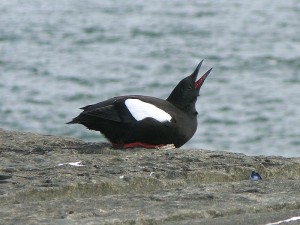
“No differences known,” says the Sibley guide about the voices of Black and Pigeon Guillemots.
This isn’t quite true. But the differences certainly are not widely known. Since these two species are impossible to mistake for other alcids either visually or vocally, and because they barely overlap in range, most birders have neither the opportunity nor the incentive to listen for vocal differences between them. But the differences are quite striking when you know what to listen for.
Each guillemot species has two types of long, complex vocalization, along with some shorter calls. The long, complex vocalizations are rather plastic and grade into one another within each species.
“Songs”
It’s an open question whether the term “song” is appropriate for any guillemot vocalizations, but for now, I’m using it to describe the most complex and most stereotyped sound in each species’ repertoire, often given from the nest. In both Black and Pigeon Guillemots the main part of the “Song” is usually preceded by a high, rapid series of chip-like notes. Black Guillemot follows up with a series of couplets that can recall the “squeaky wheel” song of Black-and-white Warbler. Sometimes this is followed by chip-like notes again. In Pigeon Guillemot, by contrast, the initial chips culminate in a single longer whistle and then a fast, slightly falling trill:
Overall, Pigeon Guillemot’s song is much faster. Black Guillemot rarely, if ever, gives a series of notes fast enough to be called a trill.
Seet Series (“Hunch-whistles”)
In addition to what I’ve called song, both species of guillemots give another longer but simpler vocalization that may have a more aggressive function, and which is usually given in a “hunched” posture like that shown in the photo above. (“Songs” can be given in a somewhat similar posture.)
In Black Guillemot, the Seet Series or “hunch-whistle” is a series of very high couplets again reminiscent of a Black-and-white Warbler’s “squeaky wheel” song, except that in the guillemot it is slower and goes on much longer, sometimes for 30+ seconds, gradually rising and falling in pitch. The equivalent sound in Pigeon Guillemot is much slower, alternating series of short “psip” notes with series of longer whistles.
Black Guillemot’s vocalizations are much more likely to involve series of couplets with alternating notes, often in a long-short, long-short pattern. Pigeon Guillemot’s vocalizations rarely involve long-short couplets for any continuing length of time; they are much more likely to contain the same kinds of notes repeated several times before switching to a new kind of note. However, vocalizations in both species are highly plastic.
“Seer” calls
The most commonly heard call from both species of guillemot is a high-pitched, finely buzzy “Seer” that may recall a Cedar Waxwing. These calls are rather plastic, but usually slightly downslurred. They seem to average higher-pitched in Pigeon Guillemot, but are otherwise almost the same.
Both species can also give shorter high-pitched notes, ranging from “seeps” or “pseeps: to quick sharp chips.
Even though birders in the field are not particularly likely to need to know the vocal differences between the guillemot species, I hope you find this information enlightening. Personally, I find the sounds to be a fascinating glimpse into the evolution and taxonomy of these charismatic birds!
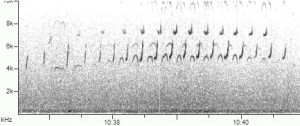
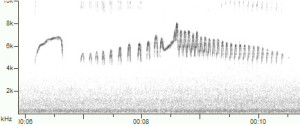
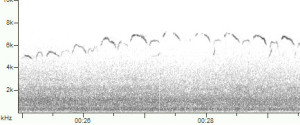
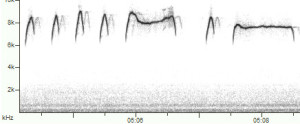
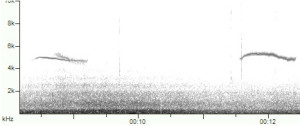

2 thoughts on “Black and Pigeon Guillemots”
Location labeling error in the first set of sonograms.
Oops! Fixed now. Thanks for the heads up.
Comments are closed.